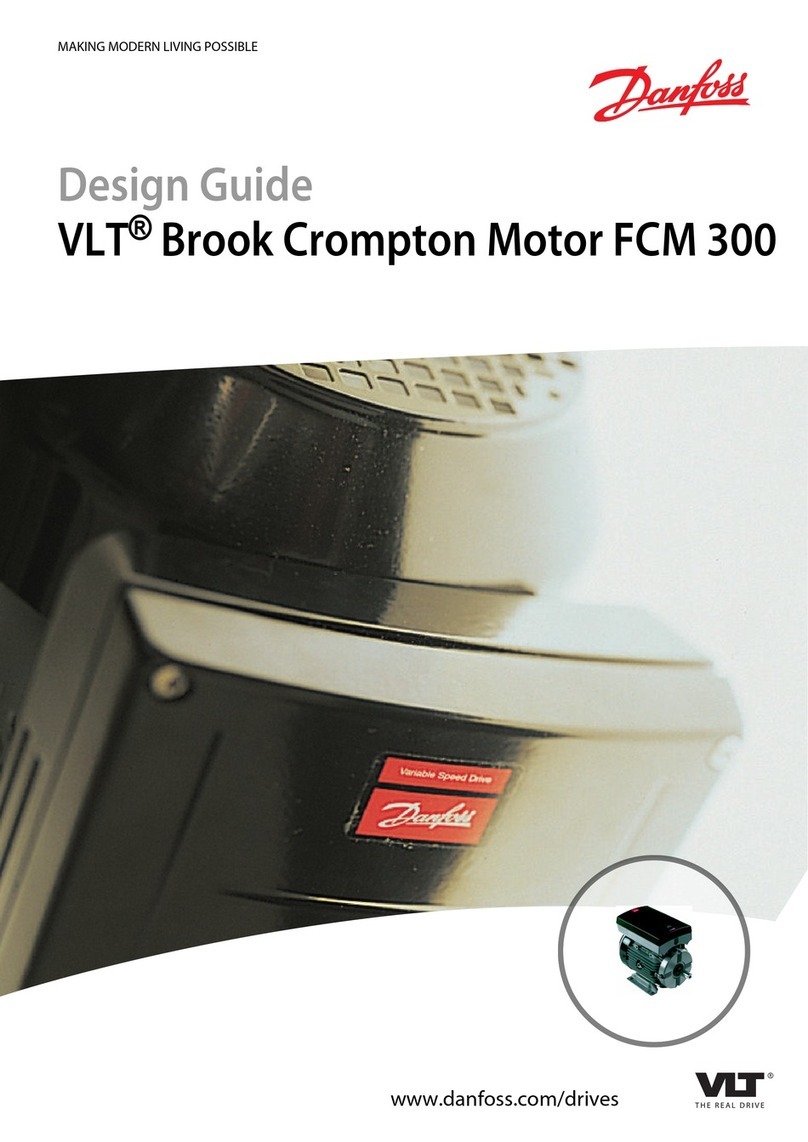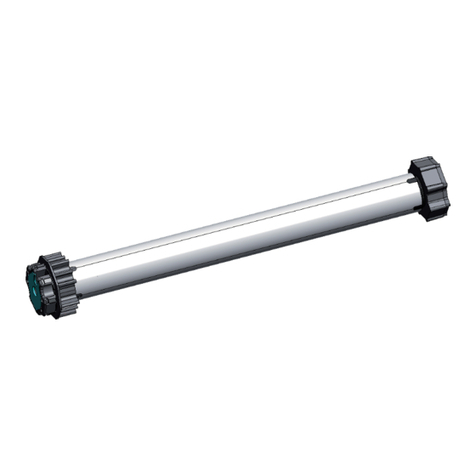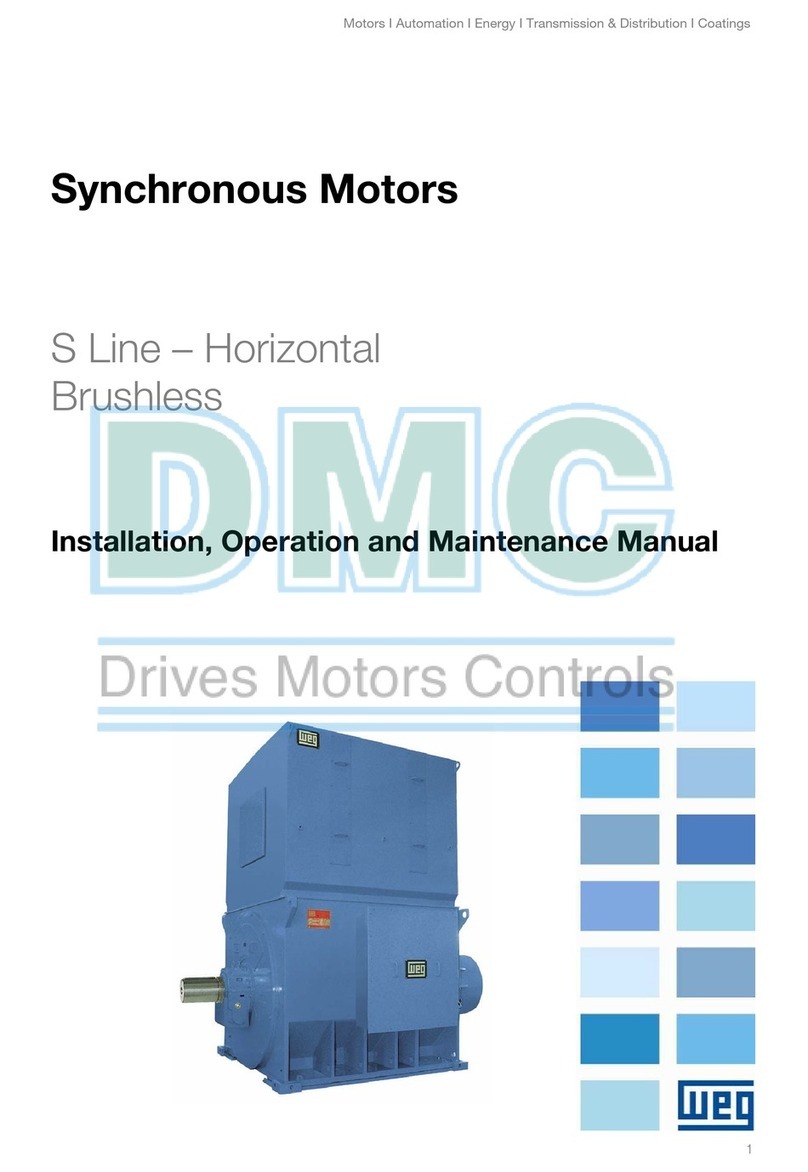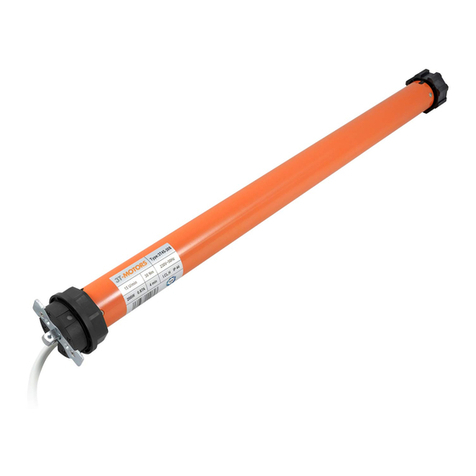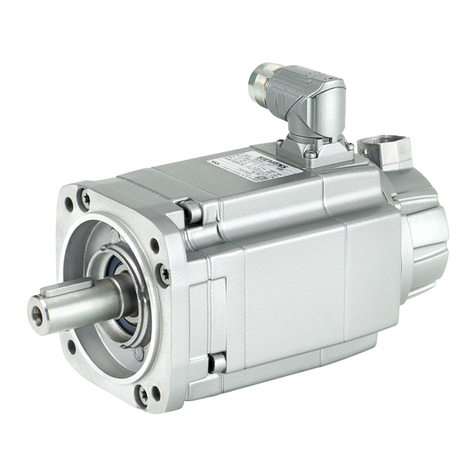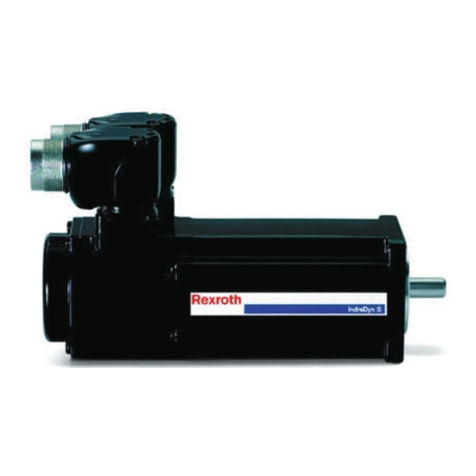Geckodrive G216 User manual

1
G216 MANUAL
STEP MOTOR INDEXER

2
The G216 is a 7A, 80VDC step motor drive with an integrated voltage-controlled oscillator (VCO). It can be used as a step and
direction input motor drive or as a dual input speed controller, with user adjustable CW and CCW speeds and acceleration
profile. The operating mode and mode related functions are set via the 10-position slide switch on side of the drive. The G216
has 2 opto-isolated inputs for use in VCO mode or Step and Direction mode. The function of the input/outputs is also
determined by the selected operating mode. The features of these operating modes are described below.
STEP MOTOR DRIVE FEATURES
The G216 can operate as a conventional STEP and DIRECTION input step motor drive.
MICROSTEPPING: The G216 has a 10 microstep native resolution; each full step angle of the motor is divided into 10 equally
spaced microsteps so a 200 step per revolution motor has 2000 stopping locations per revolution.
STEP PULSE MULTIPLIER: The G216 synthesizes 10 microstep pulses for every full-step pulse and 5 microstep pulses for half-step
pulse. The G216 acts like a full or half-step drive but motor has the smoothness of a 10-microstep drive.
SUB-MICROSTEPPING: For the 10 microstep resolution, each input step pulse is divided into 32 sub-microsteps resulting in a
motor smoothness equal to a 320 microstep drive.
MORPHING: The G216 morphs from sine-cosine motor currents at low speeds to square-wave currents at high speeds. This
technique extracts the maximum possible power from the motor at higher speeds. Morphing begins at 240RPM and ends at
360RPM.
MID-BAND RESONANCE COMPENSATION: The G216 uses active second-order damping to completely suppress a step motor’s
tendency to resonate and stall at medium speeds (300RPM – 900RPM). This results in stable motor operation in this region.
LOW SPEED RESONANCE COMPENSATION: Low speed resonances are motor vibrations at speeds below 120 RPM caused by
motor non-linearity. The PROFILE and ADJUST trimpots settings nulls these vibrations.
PROTECTION: The G216 is protected against motor to ground and motor to motor output short-circuits. It is also protected
against reversed power supply polarity and power supply over-voltage. The internal fuse blows on polarity reversal and over-
voltage.
AUTOMATIC STANDBY CURRENT: If enabled, the motor phase current is reduced to 70% of the set value and the G216 motor
switching topology is changed to a low heating recirculating mode. This happens 1 second after the last step pulse is received.
VCO FEATURES
'ON THE FLY' MOTION CONTROL: Acceleration, velocity and destination can be changed even while the motor is in motion. The
new values apply immediately.
CW and CCW LIMIT INPUTS: The G216 has an input for a limit switch on each end of travel. Once this switch is triggered the
motor will decelerate to a stop and accelerate up to the opposite direction’s set speed.

3
POWER CONNECTOR ASSIGNMENTS
The terminal connection is broken into two blocks of six connections, with the first six being power and motor connections.
Terminal Name Function
1GND DC Power supply (-)
2VDC+ DC Power supply (+)
3 A Motor winding A
4/A Motor winding A
5 B Motor winding B
6/B Motor winding B
TERMINAL 1: DC GROUND
Connect the power supply '-' to this terminal. This connection must be hard-wired to the power supply.
TERMINAL 2: DC POSITIVE
Connect the power supply '+' to this terminal. The power supply voltage must be between 18 VDC and 80 VDC and this
connection must be hard-wired to the power supply. Do not use a switch, relay contact or any other device in series with this
wired connection.
TERMINAL 3: PHASE A+
TERMINAL 4: PHASE A-
TERMINAL 5: PHASE B+
TERMINAL 6: PHASE B-
TRIMPOT ADJUSTMENTS
TRIM1 and TRIM2 are used to maximize motor smoothness at speeds below 50 RPM. The Digital Self-Test feature can useful in
making these adjustments. While the motor is turning, adjust TRIM1 for minimum motor vibration.
The rest of this user's manual is divided into two sections. Use the G216 STEP MOTOR DRIVE MANUAL if the G216 is used as a
conventional step motor drive. Use the G216 VCO MANUAL if the G216 VCO is used.

4
G216 STEP MOTOR DRIVE MANUAL
This manual covers the G216 when it's used as a conventional STP/DIR input step motor drive. Go to the G216 VCO MANUAL if
the G216 is used as a VCO and motor drive.
SWITCH SETTINGS AND CONNECTOR WIRING
Figure 1.
WARNING! THE DIP SWITCHES MUST BE SET
BEFORE THE MOTOR IS CONNECTED TO THE
G216. VERIFY THE CURRENT SETTING BEFORE
INITIAL POWERUP!

5
G216 SETUP FOR MOTOR DRIVE MODE
CAUTION:
Perform the following steps with the power supply turned 'OFF' until a step says it is OK to turn the power supply 'ON'. Do not
change the current set switches after setup while the motor is powered.
The following switch settings and their function only applies to the Motor Drive Mode. The same switches have completely
different functions in the VCO Mode.
STEP 1: SELECT MOTOR DRIVE MODE
SW1 'ON' Select step motor drive mode operation. In this mode the G216 acts like a STEP / DIRECTION motor drive and the
internal VCO isn't used.
STEP 2: SELECT MOTOR CURRENT
Use the following chart to set the G216 to the motor's phase current rating. If a motor has a rated current that isn't listed in the
table below, set the current to the first setting that is greater than the motor's rated current.
STEP 3: SELECT MOTOR SIZE
Switch 5 must be set to the motor frame size.
SW5 ‘ON’ The motor is a NEMA-23 size or smaller.
SW5 'OFF' The motor is a NEMA-34 size or larger.
STEP 4: SELECT STEP SIZE
The G216 can move in full-step, half-step or 10-microstep increments.
FULL-STEP
SW3 'ON'
SW4 'ON'
Every step pulse will move a 1.8 degree motor 1.8 degrees. The motor will move with 10-microstep smoothness which greatly
limits low speed vibration.
HALF-STEP
SW3 'ON'
SW4 'OFF'
Every step pulse will move a 1.8 degree motor 0.9 degrees. The motor will move with 10-microstep smoothness to limit low
speed vibration.
10-MICROSTEP
SW3 'OFF'
SW4 'ON'
Every step pulse will move a 1.8 degree motor 0.18 degrees. The motor will move with 320-microstep smoothness which makes
the motor's motion continuous instead of step-wise even at very low speeds (less than 1 full-step per second).
STEP 5: SELECT STANDBY CURRENT REDUCTION
Standby Current Reduction is a method of reducing motor heating while a motor is idle and not moving. This is accomplished
reducing motor current to 70% of the set value if this setting is enabled. The only adverse effect is the motor's holding torque is
reduced to about 75% of its nominal value. If the motor has a back-driving load such as holding up a weight against gravity, this
selection may not be advisable.
When enabled, the current reduction goes into effect 1 second after the last step pulse is received. The motor stays in this state
until a new step pulse sent, at which time full current is restored very quickly.
SW2 'ON' enables current standby. The current is reduced while a motor is idle.
SW2 'OFF' disables current standby. An idle motor will stay at full current.
THIS COMPLETES THE SWITCH SETUP

6
LOGIC CONNECTOR ASSIGNMENTS
Connector terminals 6 through 12 are used for command inputs in the Step Motor Drive mode. Terminals 7, 8 and 9 are
common cathode opto-isolated inputs with 200 Ohm current limit resistors. The inputs work with 2.5V, 3.3V and 5V logic levels.
Logic 1 input current is 2 mA. The output is an open collector opto-isolator that has a 10 mA current sink rating.
Terminal Function I/O
7 DISABLE IN INPUT
8 DIRECTION INPUT
9STEP INPUT
10 COMMON EXTERNAL GROUND
11 FAULT OUT OUTPUT
12 N/C
TERMINAL 7: DISABLE IN
The motor drive is ENABLED when this input is unused or has a logic 0 applied. The motor drive is DISABLED when this input has
a logic 1 (+5V) applied. When DISABLED, the motor current goes to zero, there is no switching activity on the motor outputs and
the motor free-wheels (detent torque). The motor position is restored if no step pulses have been sent while disabled.
TERMINAL 8: DIRECTION
The state of this input determines the direction a motor will move when a step pulse is received. The DIRECTION logic level must
be stable 250ns before the active edge of the step pulse.
TERMINAL 9: STEP
A positive edge on this input (logic 0 to logic 1) causes the motor to move one increment of motion. The minimum logic 1 time
is 1 microsecond and the minimum logic 0 time is 3 microseconds.
TERMINAL 10: COMMON
This is the ground terminal for the DISABLE, DIRECTION and STEP inputs and the FAULT output. It must go to the ground
terminal of the controller that generates these inputs.
TERMINAL 11: FAULT OUT
This output goes to a logic 1 when the drive goes into protective shutdown because of over-voltage, over-current or over-
temperature. Once the cause for the FAULT is corrected, the FAULT output can be cleared by cycling the power supply or the
DISABLE input. The FAULT LED blink code is below:
BLINK CODE
STATE INDICATED
Solid Green
Step and Direction Mode: Power is applied.
VCO Mode: Power applied and speed is set to zero.
Solid Red
Step and Direction Mode: Drive is disabled, motor is
freewheeling.
GREEN-GREEN-GREEN-OFF
VCO Mode: Motor rotation is CW
RED-RED-RED-OFF
VCO Mode: Motor rotation is CCW
Table 1
When finished with the switch setup and wiring, it is OK to turn on power supply.
END OF G216 STEP MOTOR DRIVE MANUAL

7
G216 SETUP FOR VCO MODE
CAUTION: The following switch settings and their function only applies to the VCO Mode. The same switches have completely
different functions in the Step Motor Drive mode. Turn the power supply 'OFF' and take care to set the switches to their
correct settings when changing the operating mode.
STEP 1: SELECT MOTOR DRIVE MODE SW1 'OFF' Select VCO mode operation.
STEP 2: SELECT MOTOR SIZE SW5 ‘ON’ The motor is a NEMA-23 size or smaller.
SW5 'OFF' The motor is a NEMA-34 size or larger.
STEP 3: SELECT SPEED RANGE The G216 has three speed ranges, each adjusting the sensitivity and range of TRIM4 and
TRIM5.
LOW SPEED (0 – 234 RPM)
SW3 'ON'
SW4 'ON'
TRIM4 and TRIM5 will have a maximum speed of 234 RPM when turned fully CW. Fully CCW will get zero speed form the motor.
MEDIUM SPEED (0 – 937 RPM)
SW3 'ON'
SW4 'OFF'
TRIM4 and TRIM5 will have a maximum speed of 937 RPM when turned fully CW. Fully CCW will get zero speed form the motor.
HIGH SPEED (0 – 3750 RPM)
SW3 'OFF'
SW4 'ON'
TRIM4 and TRIM5 will have a maximum speed of 3750 RPM when turned fully CW. Fully CCW will get zero speed form the
motor.
STEP 4: SET ACCELERATION TRIM3 will set the trapezoidal ramping profile for CW and CCW speed.
This trimpot will set the acceleration time for the CW and CCW velocities. This time is proportional to the amount the trimpot is
turned, with a minimum acceleration and deceleration time of 128 milliseconds and a maximum acceleration and deceleration
time of 32 seconds. This is an analog setting and will typically be empirically derived.

8
LOGIC CONNECTOR ASSIGNMENTS
Terminals 7, 8 and 9 are opto-isolator LED anode inputs in series with 200 Ohm current limit resistors. The LED cathodes go to
the COMMON terminal. The inputs work with 2.5V, 3.3V and 5V logic levels. Minimum logic 1 input current is 2 mA. Terminals 5,
6 and 7 are three opto-isolated collector outputs that have a 10 mA current sink rating and their emitters go to the COMMON
terminal.
Terminal Function I/O
7 RUN/STOP INPUT
8 CW RUN INPUT
9CCW RUN INPUT
10 COMMON EXTERNAL GROUND
11 FAULT OUT OUTPUT
12 N/C
TERMINAL 7: RUN/STOP
This input is the only way to control VCO mode on or off. Applying +5VDC to TERMINAL 7 will cause the motor to accelerate to
the speed set at the CW and CCW trimpots. Removing +5V will cause the motor to decelerate to a stop.
TERMINAL 8: CW RUN
This input is a CW RUN input. Applying +5V to this input will accelerate and run the motor to the speed set on TRIM4.
TERMINAL 9: CCW RUN
This input is a CCW RUN input. Applying +5V to this input will accelerate and run the motor to the speed set on TRIM5.
TERMINAL 10: COMMON
This terminal serves as the COMMON shared GND for the RUN/STOP, CW RUN, and CCW RUN +5V inputs.
TERMINAL 11: MOTOR STOPPED
This open-collector output will go to a logic “0” when the motor is stopped. The time between signaling the motor to stop and
this output going low will be equal to the deceleration time. This output will only go low when the motor is no longer moving.
DISCLAIMER
CERTAIN APPLICATIONS USING POWER PRODUCTS MAY INVOLVE POTENTIAL RISKS OF DEATH, PERSONAL INJURY OR SEVERE
DAMAGE TO PROPERTY. GECKODRIVE INC. PRODUCTS ARE NOT DESIGNED, AUTHORIZED OR WARRANTED TO BE SUITABLE FOR
USE IN LIFE-SUPPORT DEVICES OR OTHER CRITICAL APPLICATIONS. INCLUSION OF GECKODRIVE INC. PRODUCTS IN SUCH
APPLICATIONS IS UNDERSTOOD TO BE FULLY AT THE PURCHASER’S OWN RISK
In order to minimize risks associated with the purchaser’s application, adequate design and operating safeguards must be
provided by the purchaser to minimize inherent or procedural hazards. GECKODRIVE INC. assumes no liability for applications
assistance or the purchaser’s product design. GECKODRIVE INC. does not warrant or represent that any license, either express or
implied, is granted under any patent right, copyright or other intellectual property right of GECKODRIVE INC.
MANUAL CHANGE LOG
DATE
CHANGES MADE
7/17/2018
G216 Rev-A Manual Published
2/9/2022
G216 REV1 Manual Published, with updated diagrams
5/2/2022
G216 REV2 Manual Published, pinout clarifications and standardized format
Table of contents
Popular Engine manuals by other brands
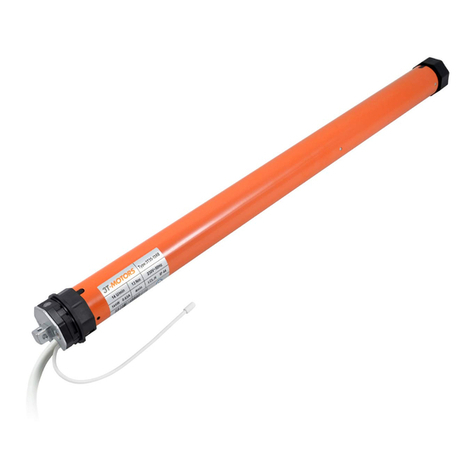
3T-Components
3T-Components 3T-MOTORS 3T45 Installation & operating instructions
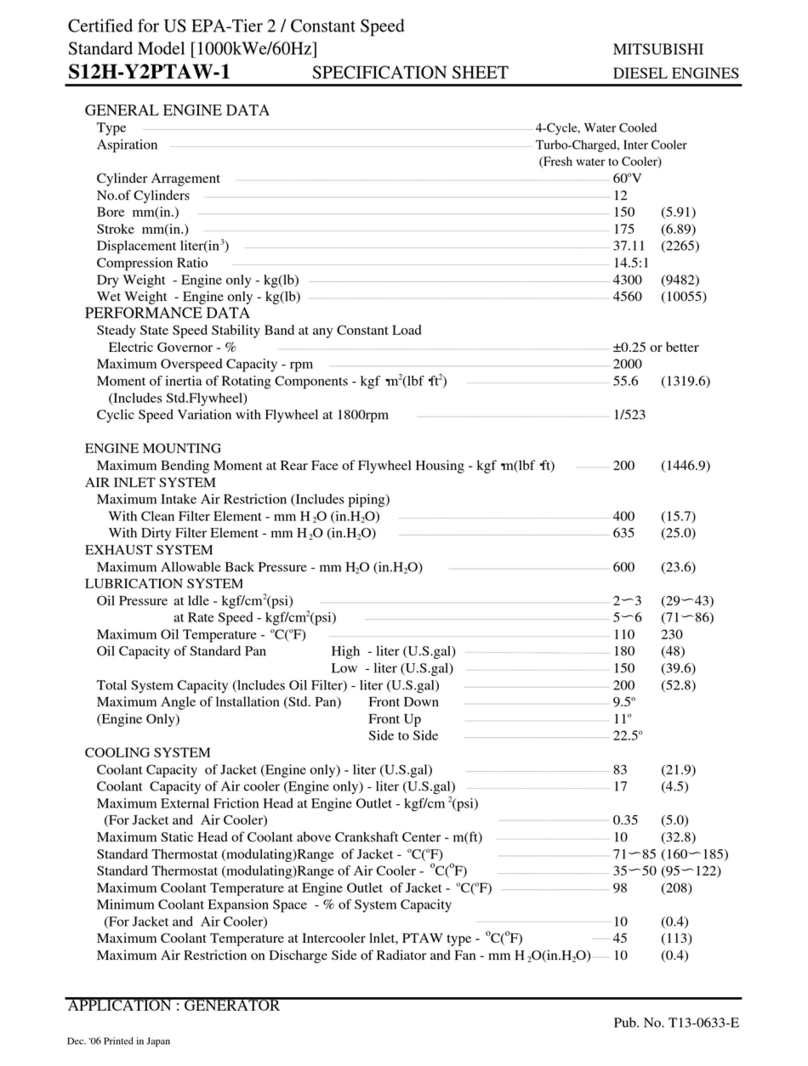
Mitsubishi
Mitsubishi Diesel Engine S12H-Y2PTAW-1 Specification sheet
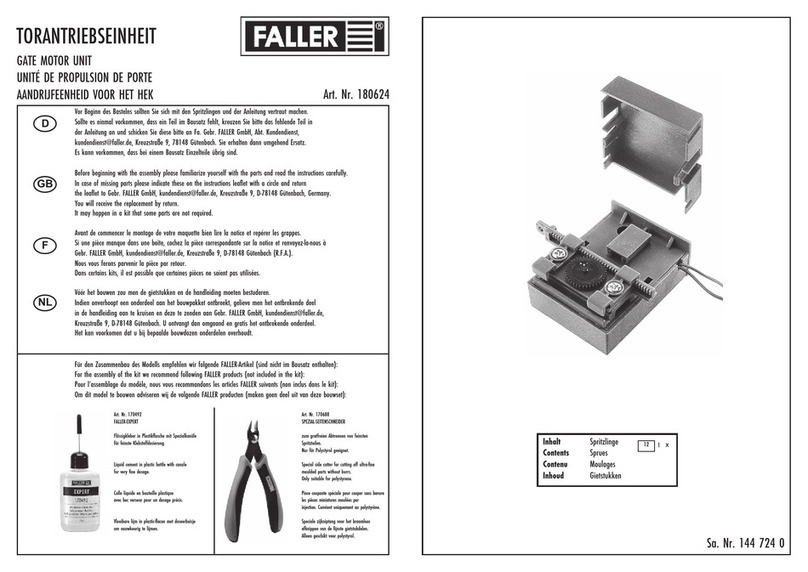
Faller
Faller 180624 manual
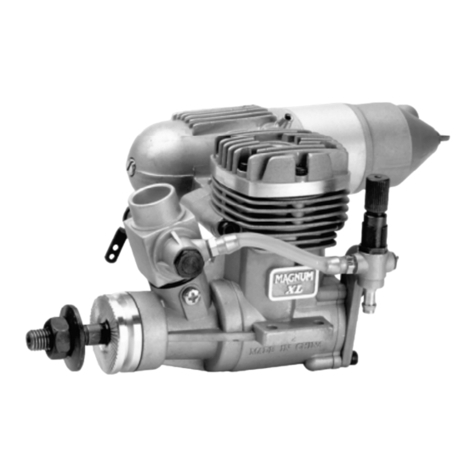
Magnum
Magnum XL .25ARNV operating instructions

NEROXDOMO
NEROXDOMO PULSE 25 BAT installation manual

Graco
Graco Premier 222800 Instructions-parts list


